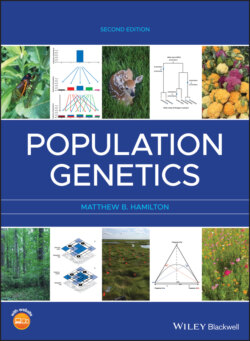Читать книгу Population Genetics - Matthew B. Hamilton - Страница 41
The many meanings of inbreeding
ОглавлениеUnfortunately, the word inbreeding is used as a generic term to describe multiple distinct, although interrelated, concepts in population genetics (Jacquard 1975; Templeton and Read 1994). Inbreeding can apply to:
consanguinity or kinship of two different individuals based on two alleles sampled at random;
autozygosity of two alleles within an individual;
the fixation index and Hardy–Weinberg expected and observed genotype frequencies, especially when there is an excess of homozygotes;
inbreeding depression caused by deleterious recessive alleles or by overdominance;
the description of the mating system of a population or species (as in inbred);
genetic subdivision of a species into populations that exchange limited levels of gene flow such that individual populations increase in autozygosity;
the increase in homozygosity in a population due to its finite size.
These different concepts all relate in some way to either the probability of allele being identical by descent or to expected genotype frequencies in a population, so the connection to inbreeding is clear. Awareness of the different ways the word inbreeding is used as well as an understanding of these different uses will prevent confusion, which can often be avoided simply by using more specific terminology. Remembering that the concepts are interrelated under the general umbrella of inbreeding can also help in realizing the equivalence of the population genetic processes in operation. The next chapter will show how finite population size is equivalent in its effects to inbreeding. Chapter 4 will take up the topic of population subdivision.
